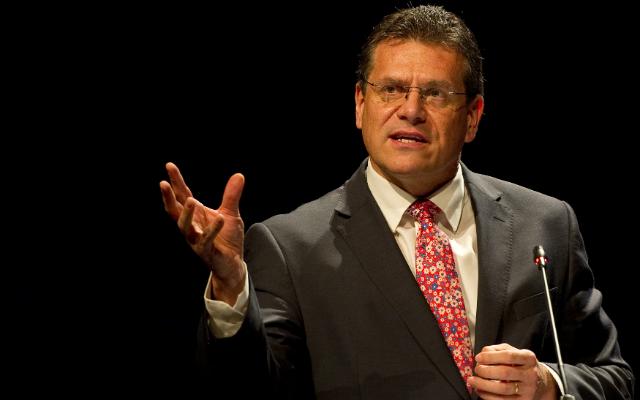EnergEuropean cities and regions are vital to the success of the Energy Union, writes European Commission Vice-President Maroš Šefčovič
On 4 October, the European Parliament ratified the Paris Agreement – the first-ever universal, legally binding global climate deal. The European Union (EU) is already implementing its own commitments to the Paris Agreement but the EU’s swift ratification triggers its implementation in the rest of the world. 2016 is the moment of delivery for the Energy Union. Before the end of the year, we will come forward with our comprehensive legislative proposals. They will be holistic in nature and neatly fit with the Paris Agreement.
The EU’s Energy Union Strategy consists of mutually reinforcing dimensions which are all very relevant for cities and regions across the European Union. Energy Union means diversifying Europe’s sources of energy and making more efficient use of energy produced within the EU.
At the same time, we are increasing energy efficiency: Consuming less energy in order to reduce pollution and preserve domestic energy sources. Energy efficiency also reduces the EU’s need for energy imports. In parallel, emission reductions through the renewal of the EU Emissions Trading System and through the globally binding Paris Agreement encourage private investment in new infrastructure and technologies. The main benefits for European cities and regions are clear: Energy Union offers exciting new investment opportunities!
Those objectives of the Energy Union Strategy are underpinned by concrete, binding numbers: Our climate targets for 2030 adopted in October 2014 – at least 40% cuts in greenhouse gas emissions from 1990 levels, at least 27% share for renewable energy, and at least 27% improvement in energy efficiency – promote the competitiveness of Europe’s economy. Only if Europe remains at the forefront of innovation will we be able to retain our European way of life and ultimately our European values in the globalised world.
What’s in it for cities and regions?
We unlock investments for infrastructure through the European Fund for Strategic Investments (EFSI), the Connecting Europe Facility (CEF) and the European Structural and Investment Funds (ESIFs). The ESIFs alone invest over €454bn across the EU in the period 2014-2020. This huge investment package co-finances national projects that invest in growth and jobs. The strict eligibility criteria for co-finance through the ESIFs make sure that investments contribute towards the objectives and binding targets of the Energy Union. Overall, in the preceding financial period 2007-2013, the ESIFs have created 1 million jobs across the whole EU. Each Euro invested through the ESIFs has added €2.47 towards the EU’s GDP.
The fast pace of technological change makes it ever more important for cities and regions to constantly learn from each other, and not just in Europe! With 7.4 billion people on the planet, all of us need to continue to reduce our ecological footprint. The biggest population growth occurs in developing countries, and more particularly in megacities such as Lagos, Calcutta or São Paulo. Those cities need to transform themselves even faster than the urban centres in the developed world. The innovation necessary to successfully transform cities towards the low-carbon economy can, and should, come from best practices of European cities and regions!
A global initiative of cities and regions
In order to enable European agglomerations to share their innovations with cities around the globe, the world’s two primary city-led climate change and energy initiatives, the EU Covenant of Mayors and the Compact of Mayors, have teamed up in June to form a global initiative of cities and local governments leading in the fight against climate change. The European Commission actively participates in and supports this initiative.
Moreover, in the framework of the Energy Union, the EU Urban Agenda enacted in May enables cities to fully contribute to the design of policies so these are better adapted to urban realities. At the heart of the EU Urban Agenda, partnerships on 12 identified urban challenges – such as air quality, the integration of migrants and housing – will allow cities, Member States, EU institutions and stakeholders, such as NGOs, or business partners, to find joint solutions to improve our lives in urban areas.
Around nine million Europeans already work in the low carbon energy industry and we expect this number to double by 2030. The shape of cities is already changing as we’re moving into the next industrial revolution. Energy Union is transforming Europe. Nowhere is this as visible as in the regions and cities across the whole continent.
Maroš Šefčovič
Vice-President for Energy Union
European Commission











